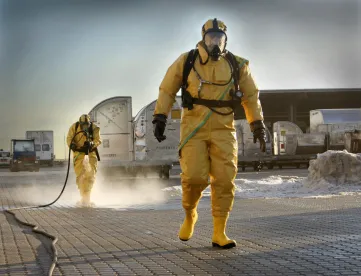On April 20, the United States Supreme Court decided that Montana homeowners within a Superfund site could seek to recover the costs of restoration of their land to its uncontaminated condition – a more complete cleanup than the Superfund remedy would accomplish – but only if the U.S. Environmental Protection Agency (“EPA”) ultimately approved the additional work. Atlantic Richfield Co. v. Christian, No. 17-1498 (U.S. Apr. 20, 2020). The case reaches the reasonable result that the federal government’s cleanup decision under the Comprehensive Environmental Response, Compensation and Liability Act (“CERCLA”), 42 U.S.C. §§ 9601-75, probably cannot be superseded by a state jury in this case, but it leaves a lot of questions about the implications of state law for federal remedy selection going forward.
Montana law allows a person to sue for tort damages if his or her land has been damaged by pollution. CERCLA allows state tort claims to proceed even though the United States may have begun Superfund enforcement or may have reached agreement with the responsible party to implement the cleanup. However, a wrinkle of Montana law allows the measure of damages to be the cost of restoring the property if (a) the property is a residence, (b) the plaintiff is the homeowner, and (c) the recovery actually will be spent to restore the property. So, a tort claim for these restoration damages becomes a claim for the costs of a “super-cleanup” when the Superfund remedy will not completely restore a property to pre-contamination conditions.
CERCLA generally protects EPA’s remedy selection from attack. The federal courts have no jurisdiction to consider a challenge to a remedy selection until after either (i) the United States sues to enforce the remedy or to recover its cost or (ii) the remedy is completed. 42 U.S.C. § 9613(h). Indeed, that provision has been held to preclude a challenge to a remedy by neighbors when the basis of the challenge was that the remedy itself (incineration of dioxin on-site) would harm them during its implementation. Arkansas Peace Center v. Arkansas Department of Pollution Control and Ecology, 999 F.2d 1212 (8th Cir. 1993), cert.denied, 511 U.S. 1017 (1994).
Oddly, section 113(h) says nothing about state court challenges to federal remedies, and indeed allows challenges in federal court when jurisdiction is based on diversity, not federal question. But, the statute otherwise insulates cleanups from state law. State permit requirements do not apply to work conducted on-site. 42 U.S.C. § 9621(e). State substantive requirements are to be considered applicable or relevant appropriate in developing a remedy, but states only have limited opportunity to impose them if EPA does not do so. 42 U.S.C. § 9621(f). And any claim arising under CERCLA must be brought in federal court. 42 U.S.C. § 9613(b).
These rules have been held by the courts of appeals generally to preclude any action under any federal or state law theory to obtain an additional or different cleanup than the one selected under CERCLA. Natural resource trustees, including the states and tribes, may sue for damages to natural resources, but only the trustees may sue and they are supposed to coordinate with the response agencies.
In ARCO, the defendant had entered into a consent decree with the United States to clean up a large Superfund site caused in part by air emissions from a copper smelter. But the Supreme Court in ARCO decided that because no explicit provision of the statute precludes a state court challenge to a federal remedy, plaintiffs were permitted to sue that defendant in state court for restoration damages, in effect a remedy challenge. Nevertheless, because the statute prohibits a PRP from implementing a remedial action (that is, a permanent cleanup) after commencement of a remedial investigation and feasibility study without EPA’s consent, 42 U.S.C. § 9622(e)(6), the plaintiffs would have to obtain EPA’s consent to bring their claims.
Section 122(e)(6) of CERCLA has not received much attention from the appellate courts. Indeed, I am aware of only one reasonably recent case, and it is not reported. Bartlett v. Honeywell Int’l, Inc., 737 Fed. Appx. 543 (2d Cir. May 25, 2018), cert. denied, 139 S. Ct 343 (2018). The Supreme Court in ARCO reads section 122(e)(6) to apply to any person who could have been liable for the site, ignoring any potential defenses. But even read that broadly, one cannot be certain that all potential state statutory or tort plaintiffs are themselves necessarily “potentially responsible parties.” Moreover, as in Arkansas Peace Center, they may not be seeking additional cleanup, they may be seeking different cleanup.
Settling expensive Superfund sites is hard enough. If the settlement does not bar additional claims for more cleanup, the task becomes that much more difficult. The Supreme Court may have sent the ARCO plaintiffs on a quixotic quest for EPA approval that may as a practical matter give the defendant most of what it needed. But that may not be the outcome in every future case.



 />i
/>i

